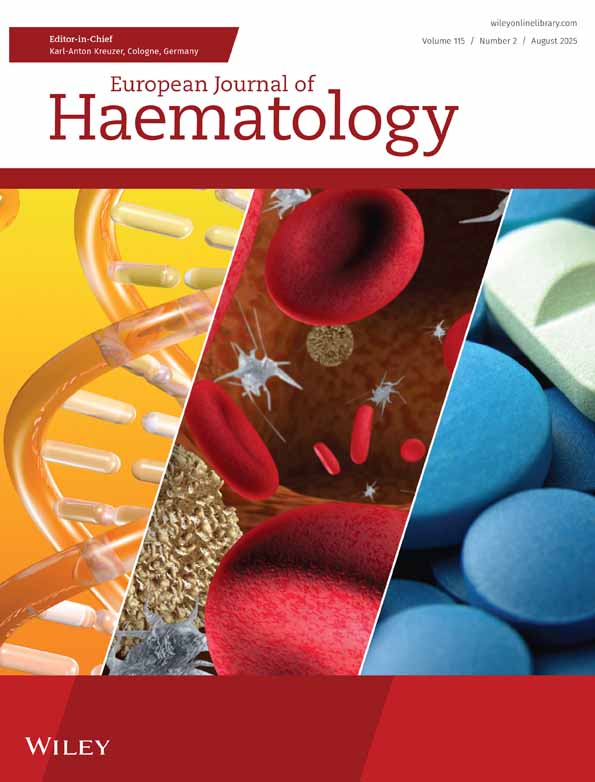Lymphokine-activated killer (LAK) cells inhibit the clonogenic growth of human leukemic stem cells
Abstract
The effect of lymphokine-activated killer (LAK) cells on the in vitro clonogenic capacity of acute myeloid leukemia (AML) blasts was investigated in a semisolid medium assay. The leukemic clonogenic capacity of 11 AML cases, selected on the basis of their ability to grow in vitro, was highly reduced following overnight preincubation with LAK effectors. The degree of colony inhibition, which ranged between 66% and 98% (mean 83.8% ± 11.4 SD), was quantitatively greater than by 51Cr release, which gave rise to lytic values between 5% and 65% (mean 43.2% ± 19.2 SD). The demonstration that the clonogenic inhibition was still induced following a shorter pre-incubation period (4 hours) suggests that the effect is unlikely to be due only to the generation of cytotoxic activity during the incubation time. The possibility that LAK cells may be employed in the management of residual disease is strengthened by the evidence that the clonogenic potential of samples containing as few as 20% and 14.3% leukemic cells could be almost completely abolished by LAK effectors. These findings further point the possible role of adoptive immunotherapy with interleukin 2/LAK cells in the treatment of patients with acute leukemia.




